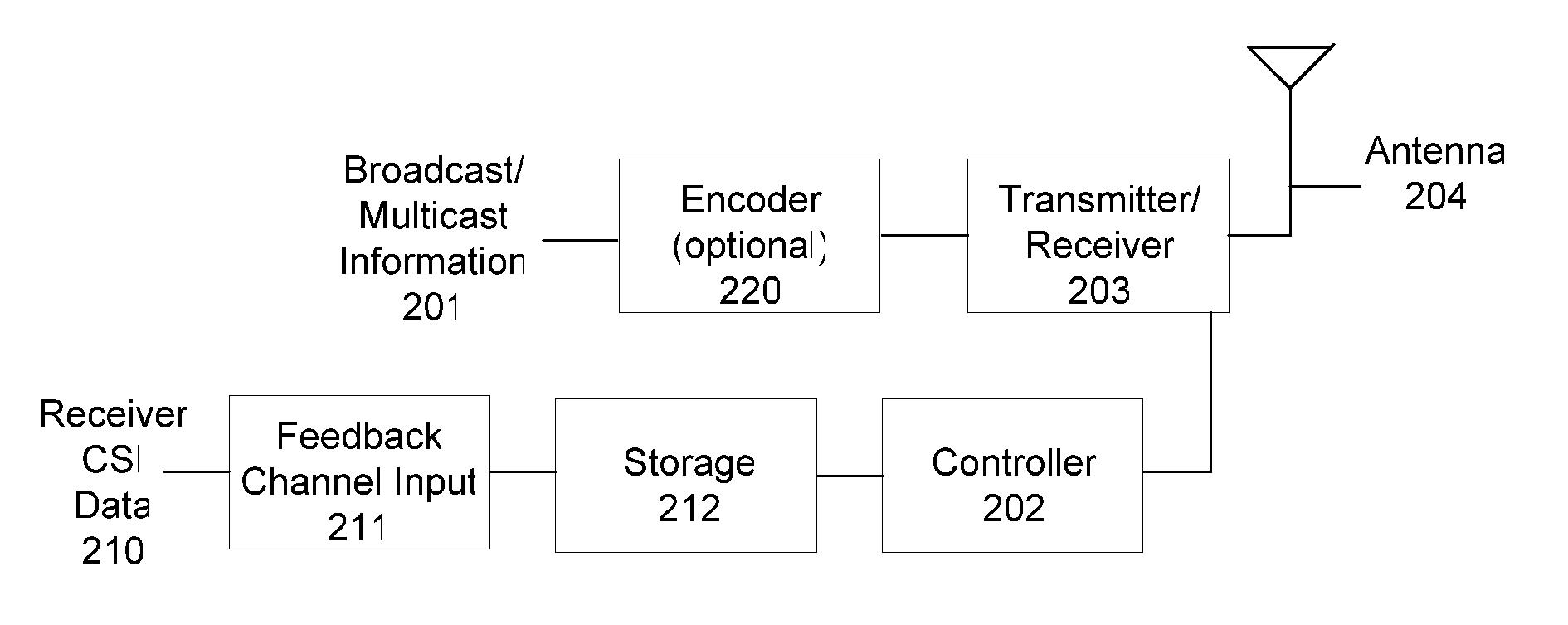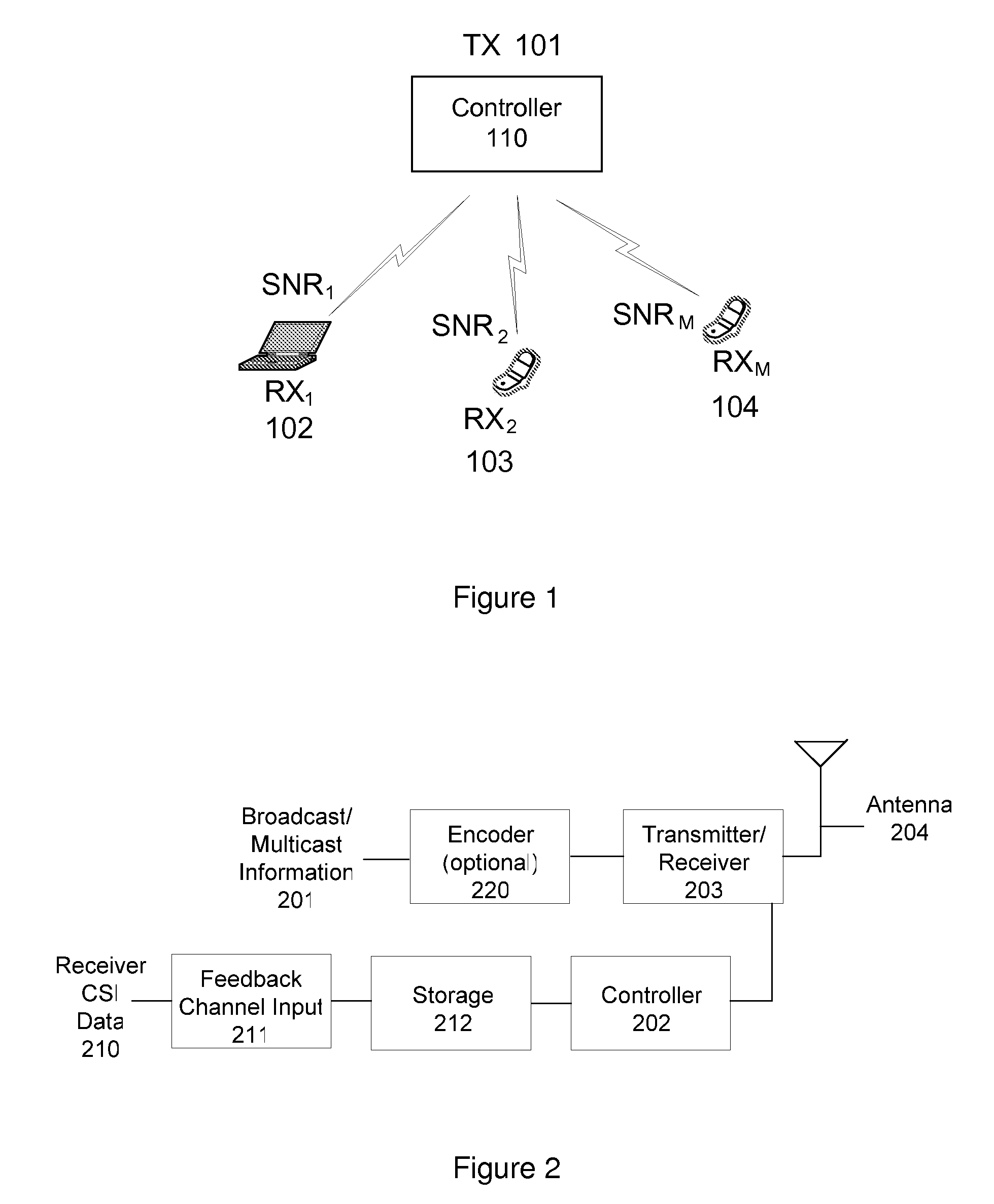Method and apparatus for opportunistic multicasting with coded scheduling in wireless networks
a wireless network and coded scheduling technology, applied in the field of multicast broadcasting, can solve the problems of exponential complexity of the solution with the number of users, waste of transmission from the user's point of view,
- Summary
- Abstract
- Description
- Claims
- Application Information
AI Technical Summary
Benefits of technology
Problems solved by technology
Method used
Image
Examples
Embodiment Construction
[0020]A method and apparatus for multicasting in a wireless network are described. In one embodiment, the multicasting includes coded scheduling. Embodiments of the present invention provide significant capacity gains for wireless networks where the same information is multicasted to multiple receivers. In wireless networks, since the medium is inherently a broadcast one, the information sent by the transmitter is simultaneously received by many users. However, each receiver observes a different and, in general a time-varying channel quality, which determines the maximum rate deliverable to each receiver at a given time instant. Under these conditions, different transmission strategies are used to achieve different short-term and long-term multicast throughput per user. At one extreme, one can transmit with respect to the worst case user to guarantee that everyone can successfully recover the information sent at each transmission. Since the channel quality of the worst case user can...
PUM
 Login to View More
Login to View More Abstract
Description
Claims
Application Information
 Login to View More
Login to View More - R&D
- Intellectual Property
- Life Sciences
- Materials
- Tech Scout
- Unparalleled Data Quality
- Higher Quality Content
- 60% Fewer Hallucinations
Browse by: Latest US Patents, China's latest patents, Technical Efficacy Thesaurus, Application Domain, Technology Topic, Popular Technical Reports.
© 2025 PatSnap. All rights reserved.Legal|Privacy policy|Modern Slavery Act Transparency Statement|Sitemap|About US| Contact US: help@patsnap.com



